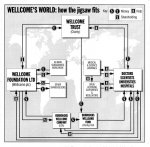Contamination May Have Marred XMRV Studies
By John Gever, Senior Editor, MedPage Today
Published: December 21, 2010
Reviewed by Dori F. Zaleznik, MD; Associate Clinical Professor of Medicine, Harvard Medical School, Boston.
Earn CME/CE credit
for reading medical news
Previous studies identifying the murine virus XMRV in patients with chronic fatigue syndrome and prostate cancer may have used contaminated reagents or clinical samples, researchers said.
Four new studies published online in Retrovirology have found that contamination is rampant in laboratory cell lines and tissue samples analyzed in the hunt for XMRV.
Moreover, DNA sequences used to identify XMRV in samples in previous studies apparently are not specific to the virus, but are also present in other mouse viruses and possibly the mouse genome itself, one of the studies suggested.Action Points
Explain that four studies now raise questions about earlier findings that XMRV, a retrovirus, is associated with chronic fatigue syndrome and prostate cancer; one study suggested that XMRV sequences are found in mouse cell cultures or perhaps even in the mouse genome.
Note that the studies raise the question of whether PCR kits might be contaminated, and whether specimens might have been contaminated with mouse cell culture during testing, but conclude only that previous findings should be reassessed.
"Whilst our observations cannot conclusively prove that XMRV is not a human pathogen, they appear consistent with the hypothesis that XMRV is not an exogenous virus transmitting among individuals," wrote Greg Towers, PhD, of University College London in England, and colleagues in the most extensive of the four papers.
Studies suggesting that XMRV may cause chronic fatigue syndrome have sparked excitement in the patient community and controversy among scientists, particularly because attempts to replicate them at other laboratories have largely failed.
Earlier, researchers had linked the virus to prostate cancer.
The possibility that the original studies had been marred by contaminated samples had been raised as a potential explanation for the discordant results, and these new results clearly bolster that case.
Among the damning findings by Towers and colleagues: XMRV genome sequences appear more diverse in cell culture than in patient samples, contrary to what would be expected for viruses that transmit among individuals.
"Even under the most conservative hypothesis that XMRV undergoes almost no evolutionary change upon transmission, we would expect sequences sampled from geographically-disparate individuals, with no known epidemiological linkage, to exhibit more diversity than sequences derived from a single infected cell line," Towers and colleagues wrote.
Instead, they suggested, the XMRV clones identified in previous studies probably originated in a prostate cancer cell line called 22Rv1. Genomic analyses of different sequences failed to identify any patient-derived sequence that could have served as an ancestor for the others.
A Bayesian statistical analysis of probable ancestries pointed to a cell-derived sequence in every one of 3,000 trials. "The estimated posterior probability that the ancestor of the cluster was not a cell line-derived sequence was <0.001," Towers and colleagues reported.
They also argued that laboratory cell lines often become contaminated with murine leukemia viruses, the family that includes XMRV, as a result of such common practices as passaging them through mice or co-culturing them with mouse cells. They analyzed 411 tumor cell lines from a standard collection, including a range of tumor types, and found murine virus sequences in several of them.
In addition, Towers and colleagues screened different mouse strains with polymerase chain reaction (PCR) primers reported to be specific for XMRV sequences, finding that these sequences could be amplified from many of them.
Along with other data, the researchers suggested that these supposedly XMRV-specific sequences are probably contained in other mouse viruses, or even the mouse genome itself.
The three other Retrovirology papers also reported evidence that cell lines and clinical samples contain non-XMRV genetic material that produces positive results when tested with PCR primers thought to be specific for XMRV. One of the reports suggested that the contamination affected PCR reagents for XMRV testing, rather than the samples.
In an accompanying commentary, Robert A. Smith, PhD, of the University of Washington in Seattle, said the initial studies linking XMRV to chronic fatigue and prostate cancer must be reassessed.
"Collectively, these results cast serious doubts on the PCR evidence used to support claims of murine leukemia virus-related viruses in prostate cancer and chronic fatigue syndrome patients," he wrote.
On the other hand, another prominent XMRV researcher who was a coauthor on two of the Retrovirology papers told MedPage Today in an email that it would be premature to discount the original studies.
"The argument for lab contamination as a source of XMRV is subtle and indirect, and not, in my opinion, conclusive," said John Coffin, PhD, of Tufts University in Boston.
One of the first researchers to link XMRV to chronic fatigue rejected the suggestion that those results were now in doubt.
"Nothing that has been published to date refutes our data," said Judy Mikovits, PhD, of the Whittemore Peterson Institute in Reno, Nev., in a statement.
The statement noted that those data included evidence that patients' serum contained antibodies to XMRV proteins. It also insisted that cell lines and clinical samples used in the institute's studies could not have been contaminated.

